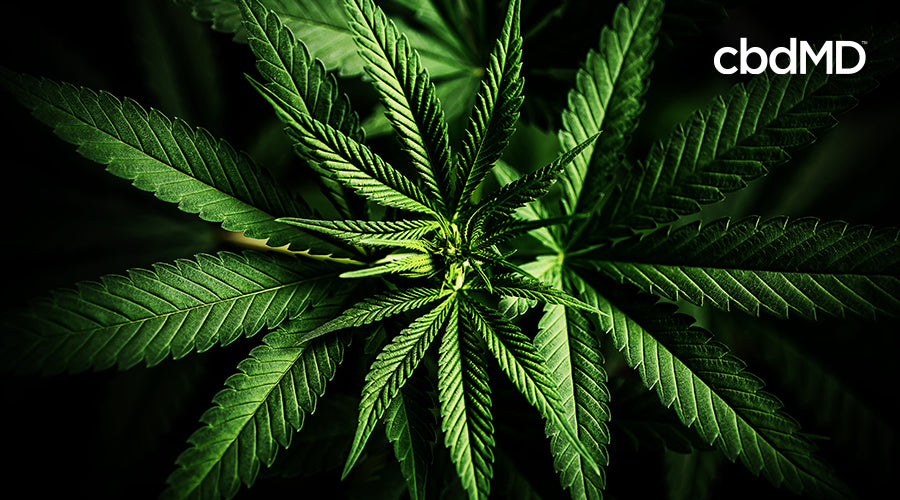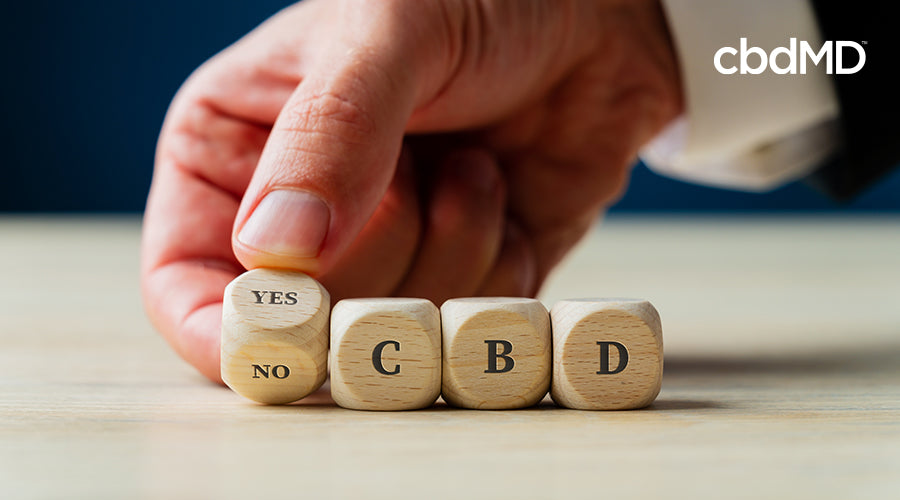To most Americans, CBD oil seems like a brand new thing. Just a couple of years ago, most of us hadn’t even heard of it. And yet, if you look for research on CBD benefits, you’ll find studies going back decades.
So when was CBD discovered, anyway? What does CBD do, and why haven’t we heard about it until now? Well, because CBD comes from cannabis, the answers come from a weird combination of history, science, and moral panic. So let’s make like a superhero franchise and tell the epic CBD origin story. In this article, we’ll cover:
- How the Western world discovered – and criminalized – the powers of cannabis
- The discovery of CBD and its benefits
- The history of CBD legalization
- New ways to celebrate CBD, like National CBD Day 2021!

Cannabis and Its Enemies
For centuries, the English-speaking world knew Cannabis sativa as hemp, a crop grown for its useful fiber. The fact that consuming its buds could have medicinal and mood-altering effects was long known in Asia, however, and Europeans traveling and colonizing there started to notice.
Starting in the 19th century, two important trends set cannabis on its current path. For one, scientists started picking apart traditional herbal remedies and figuring out what components actually had the desired effect on the body. This essentially created the modern pharmaceutical industry: now working ingredients could be purified and more precisely measured for maximum benefit.
Increased potency could mean increased danger, though. For instance, when cocaine was first isolated from the coca leaf it was seen as a wonder drug. No less than Sigmund Freud was a big booster! But then, whoops – it turned out to be super addictive.
This in turn fed another 19th-century trend: a growing crackdown on intoxicants of all kinds. Even alcohol wasn’t spared, with the temperance movement eventually getting all booze sales banned in the U.S. from 1920 to 1933.
While the U.S. government relented on the alcohol ban, it only got more strict about cannabis. The Marihuana Tax Act of 1937 allowed hemp only to be grown under highly restricted conditions. The Single Convention on Narcotic Drugs of 1961 seemingly nailed the coffin shut by international treaty, naming cannabis as a dangerous, addictive substance with no good uses. The 1970 Controlled Substances Act in the U.S. soon followed suit. For a while, legal hemp production was dead.
The Discovery of CBD
At the same time all this was happening, though, scientists continued in their work of picking apart plants. CBD was first identified and named by a research team at the University of Illinois in 1940, although they didn’t describe it in much detail.
Other scientists went further. In 1946, Dr. Walter S. Loewe experimented with giving different cannabinoids to lab mice, and noticed that CBD did not seem to be intoxicating. This was later confirmed by Israeli scientist Dr. Raphael Mechoulam, who has probably done more to advance cannabis research than any other single person. He was the first to describe the chemical structure of CBD and other cannabinoids, and also the one who positively identified THC as the one and only intoxicating part of cannabis.
Mechoulam made that discovery in the 1960s, which you might say was both the best and the worst time to make it. Thanks to its popularity with the counterculture, cannabis use was soaring. But what the hippies called The Establishment was not pleased about the explosion of recreational drug use in the era. So soon cannabis was once again thrown into a bucket with far more destructive substances in the new “war on drugs.”

The History of CBD Legalization
Eventually, the hippies grew up, and many of them became responsible citizens, even leaders. But they never entirely forgot about smoking weed. In fact, many of them found that it could ease certain health problems, like nausea, pain, and glaucoma. This led to California legalizing cannabis for medical use in 1996, and a steady train of other states has followed suit.
Continuing medical research was also uncovering where these benefits came from. In 1988, scientists at St. Louis University discovered the endocannabinoid system, the network of receptors in the human body that respond to cannabis. It turns out they’re all over, and involved in a lot of bodily processes, including mood, memory, appetite, the immune response, and others still being discovered.
The potential benefits of cannabis also drew the attention of the pharmaceutical industry. Back in 1986, U.S. authorities approved a synthetic form of THC, dronabinol, as a treatment for nausea and appetite loss. More significantly for CBD, in 1998 a British startup called GW Pharmaceuticals got clearance to develop cannabis-based treatments in the U.K.
GW soon zeroed in on CBD as a substance of interest. But while its scientists were toiling away in the lab, CBD got a big publicity boost from an unexpected source: a young American girl named Charlotte Figi.
Charlotte was born in 2006 with a severe form of epilepsy called Dravet syndrome. Her parents, hunting for any and every substance that might help, gave her a low-THC, high-CBD form of cannabis and found that it drastically reduced her seizures.
In the early 2010s, the Figi family took to the media to encourage greater access to cannabis in general and CBD in particular. Partly due to this pressure, the 2014 U.S. Farm Bill included a program allowing federally legal growth of cannabis for the first time in decades – so long as it can’t get anyone high.
This brought on a change in nomenclature. While “hemp” was once just the English word for cannabis (which is from Greek), now the U.S. government defines hemp as cannabis with no more than 0.3 percent THC by dry weight. That’s the stuff that’s legal. Higher-THC cannabis is officially called marijuana, and it’s federally illegal, though some states allow it.
So Now CBD Is Legal… Mostly
In the United States, 2018 was a momentous year for CBD. GW Pharmaceuticals’ purified pharmaceutical CBD, called Epidiolex, won FDA approval for treating Dravet syndrome. And that December, Congress passed the 2018 Farm Bill, which federally legalized all products of hemp – including CBD.
That proved to be quite a turning point for the many young CBD startups out there, including us here at cbdMD. Our freedom to sell and advertise our CBD products has greatly increased, which is why it might seem like a zillion CBD sellers have popped up overnight. But there’s still a lot of legal murkiness that we hope will be cleared up soon.
Let’s be crystal clear about one thing: the ONLY form of CBD approved for treating Dravet syndrome, or any other medical condition, is GW’s Epidiolex. While pure CBD is the same chemical regardless of where it comes from, different extraction methods create slightly different blends. See our post on broad spectrum vs. full spectrum for more details.
However, the approval meant that all CBD – and not just Epidiolex – is now officially a drug. This has left CBD in a complicated gray zone when it comes to selling CBD in food, as we detailed in a whole other post.
Even apart from that, the other strange thing about CBD is that it’s federally legal if it comes from hemp, but not if it comes from marijuana – even if its chemical structure is exactly the same. That’s a result of Congress trying to carve out an exception for CBD and other hemp products without nixing that 1961 treaty classifying cannabis as a dangerous drug.
That might not last much longer, though. More and more states are decriminalizing all cannabis, and recently the U.S. House of Representatives passed a bill doing the same at the federal level. While the bill didn’t get anywhere in the Senate, it’s a sign of the times that it even got that far.
The mood is changing elsewhere in the world, too. The World Health Organization has been pushing to loosen cannabis laws in light of all that we’ve learned since the anti-drug treaty. If the treaty changes, that gives member nations a lot more freedom to set more rational cannabis laws.

The History of CBD Enters a New Phase
Although CBD’s legal status is still complicated, it’s safe to say that the substance is now not just tolerated, but celebrated in many quarters. We’ve had movie stars endorsing it, athletes singing its praises, and ordinary folks preaching its benefits to their friends and families. That’s why cbdMD established National CBD Day, set to be commemorated for the fourth time this August 8.
Back when the company first marked the day in 2018, it was mostly about education and awareness-raising. CBD wasn’t even legal at the federal level back then, and most Americans had never heard of it! That’s still part of its purpose, but since CBD is much better known now, it’s also turned into an opportunity for CBD sellers of all stripes to offer sales and discounts. Keep an eye on cbdMD.com or sign up for our newsletter for special deals!
So the history of CBD may yet be in its early days. Like a superhero epic, the CBD origin story may lead to even more eye-popping sequels!
CBD History Timeline
- 1937: The Marihuana Tax Act puts an end to most cannabis farming in the U.S.
- 1940: CBD is first identified by researchers at the University of Illinois.
- 1946: Dr. Walter S. Loewe’s experiments find CBD to be non-intoxicating.
- 1961: The Single Convention on Narcotic Drugs encourages a worldwide ban on cannabis.
- 1963: Dr. Raphael Mechoulam first describes the chemical structure of CBD, launching a new wave of research.
- 1970: The U.S. Controlled Substances Act puts all cannabis products in its most-dangerous-drug category.
- 1986: The FDA approves the first cannabis-derived pharmaceutical, dronabinol.
- 1996: California starts a trend of legalizing cannabis for medical purposes.
- 2012: Charlotte Figi’s family starts using high-CBD cannabis to treat her seizures, then launches a campaign advocating for it.
- 2014: The Farm Bill legally distinguishes between low-THC hemp and high-THC marijuana, legalizing the former with restrictions.
- 2018: The FDA approves GW Pharmaceuticals’ CBD drug, and the next Farm Bill legalizes all products of hemp, including CBD. Also, cbdMD establishes August 8 as National CBD Day so everyone can know the amazing history of CBD!

